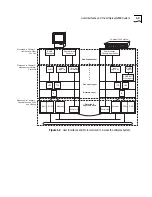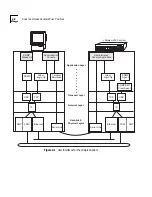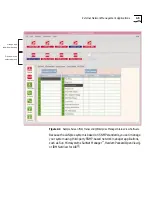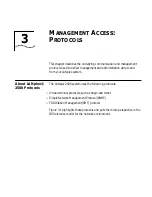
Conventions
3
Table 3
Text Conventions
Convention
Description
“Enter” vs. “Type”
The word “enter” means type something, and then press the Return or Enter key. Do
not press the Return or Enter key when an instruction simply says “type.”
“Syntax” vs. “Command”
The word “syntax” indicates that the general form of a command syntax is provided.
You must evaluate the syntax and supply the appropriate port, path, value, address, or
string. Example:
The following syntax specifies the time and date:
mm/dd/yy hh:mm:ss
The word “command” indicates that all variables in the command have been supplied
and you must enter the command as shown. Example:
The following command enables Spanning Tree:
bridge stpState enabled
screen display
This typeface
represents displays that appear on your terminal screen. Example:
Login:
commands
This typeface
represents commands that you enter. Example:
bridge stpState disabled
Keys
When specific keys are referred
to in the text, they are called out by their labels, such
as the Return key or the Escape key, or they may be shown as [Return] or [Esc].
If you must press two or more keys simultaneously, the keys are linked with a plus sign
(+). Example:
Press [Ctrl]+[Alt]+[Del].
Italics
Italics
are used to denote
emphasis
or new terms where they are defined.
Bold
Bold
is used to denote key features, menus, and menu options.
Summary of Contents for LANPLEX 2500
Page 1: ...LANPLEX 2500 OPERATION GUIDE Part No 801 00344 000 Published November 1996 Revision 03...
Page 14: ......
Page 18: ...1 4 CHAPTER 1 LANPLEX MANAGEMENT AND ADMINISTRATION OVERVIEW...
Page 78: ...III Chapter 9 FDDI Overview and Implementation Chapter 10 FDDI Networks FDDI TECHNOLOGY...
Page 97: ...IV Chapter 11 ATM Networks ATM TECHNOLOGY...
Page 116: ...V Appendix A SNMP MIB Support Appendix B Technical Support APPENDIXES...











































